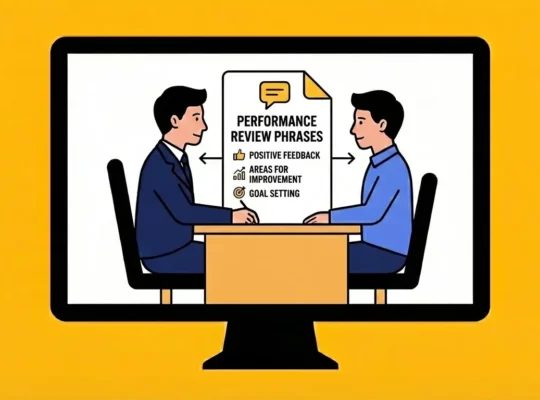Ever felt like your workplace was more of a battlefield than a sanctuary? It’s time to change that. Positive psychology offers a powerful toolkit to transform your workplace into a haven of well-being and engagement.
So back to THE question, does positive psychology in the workplace really work? The answer is YES and in this article, we’ll explore how it can transform your workplace into a thriving ecosystem.
Table of Contents
Chapter 1: What is Positive Psychology? And How Does it Work in the Workplace?
Chapter 2: What is the PERMA Model? And What is its Impact on Employee Well-Being?
Chapter 3: How to Cultivate Positive Emotions at Work?
Chapter 4: How to Promote Engagement Through Strengths and Flow?
Chapter 5: Building Positive Relationships at Work: Truth or Myth?
Chapter 6: Meaning and Purpose in the Workplace: The Glue to Your Team
Chapter 7: How to Celebrate Employee Accomplishments and Foster Team Growth?
Chapter 8: The Organizational Benefits of Positive Psychology
Chapter 9: 6 Key Strategies for Implementing Positive Psychology
Chapter 10: Measuring the Impact of Positive Psychology
Chapter 1: What is Positive Psychology? And How Does it Work in the Workplace?
Positive Psychology: Definition
Positive psychology is a branch of psychology that focuses on what makes life worth living, highlighting the importance of cultivating strengths, well-being, and happiness. When applied to the workplace, positive psychology aims to create a culture where employees can thrive both personally and professionally. This approach enhances employee well-being, engagement, productivity, and overall job satisfaction.
Positive psychology focuses on building strengths and enhancing well-being rather than just fixing problems. In this article, we’ll explore the importance of applying positive psychology in the workplace, diving into the science behind it, its practical applications, and how it benefits both employees and organizations. Let’s explore how you can leverage these principles to make your workplace a happier, more productive environment.
How Positive Psychology Transforms the Workplace
Imagine a workplace where employees are brimming with enthusiasm, where challenges ignite creativity, and where Mondays don’t feel like Mondays. This isn’t a utopian dream; it’s the reality within reach by harnessing the power of positive psychology.
Positive psychology focuses on building strengths, fostering happiness, and nurturing a sense of meaning. Contrary to traditional approaches that concentrate on fixing problems, this science-backed approach empowers organizations to cultivate a thriving work environment. Here’s how:
- Engagement Ignites: Employees who feel valued, supported, and optimistic are more likely to be engaged in their work. Positive psychology encourages practices that recognize achievements, celebrate strengths, and promote collaboration, fostering a sense of belonging and purpose that fuels engagement.
- Well-being Takes Root: Work shouldn’t be a detriment to happiness. Positive psychology helps organizations create supportive environments that prioritize mental health and reduce stress. Techniques like mindfulness training and gratitude exercises can equip employees with tools to manage stress and cultivate resilience, leading to a happier, healthier workforce.
- Productivity Soars: When employees feel good about what they do, it shows in their output. Positive psychology encourages optimism and fosters a “growth mindset,” where challenges are seen as opportunities for learning and growth. This shift in perspective leads to increased creativity, problem-solving skills, and ultimately, higher productivity.
- Satisfaction Sets In: A happy workplace breeds happy employees. Positive psychology fosters practices that promote job satisfaction by focusing on strengths and aligning work with personal values. This leads to a more positive work experience, reducing turnover and fostering a loyal, engaged workforce.
Chapter 2: What is the PERMA Model? And What is its Impact on Employee Well-Being?
The PERMA Model by Martin Seligman
When it comes to employee happiness, it’s not just about avoiding negativity; it’s about actively cultivating well-being. That’s where the PERMA model comes in.
Developed by renowned psychologist Martin Seligman, PERMA is a framework for understanding the key elements that contribute to a fulfilling life. It’s a blueprint for creating a positive work environment where employees can thrive.
The 5 Main Elements of The PERMA Model
Positive Emotions
Feeling good is contagious! Encourage positivity in your workplace through celebrations, recognition, and fostering a supportive atmosphere. For instance, consider hosting monthly team lunches or recognizing employee achievements in a company-wide email.
Engagement
When employees are fully engaged, they’re more productive and passionate about their work. Foster engagement by giving them meaningful tasks, autonomy, and growth opportunities. For example, allow employees to take on special projects, provide mentorship opportunities, or offer professional development courses.
Relationships
Strong relationships matter. Promote teamwork, collaboration, and a sense of belonging. Organize team-building activities, encourage open communication, and create opportunities for employees to connect and socialize.
Meaning
Help employees find purpose in their work. Connect their tasks to the bigger picture and highlight the positive impact they have on others. For instance, share customer testimonials or stories about how the company’s products or services have made a difference in people’s lives.
Accomplishment
Celebrate achievements, big and small. This boosts morale, fuels motivation, and reinforces a sense of accomplishment. Consider offering rewards or recognition programs, or simply acknowledging employees’ hard work and dedication in a public forum.
Application of PERMA in Organizational Culture
To implement PERMA, organizations can:
- Encourage regular recognition of achievements to build a sense of accomplishment.
- Foster positive relationships through team-building activities and open communication.
- Align job roles with employees’ strengths to promote engagement and satisfaction.
- Share the company’s vision and goals to help employees find meaning in their work.
By focusing on these five elements, you can create a workplace where employees are happier, more engaged, and more productive. It’s not just about avoiding the negative; it’s about actively building a positive and thriving work environment.
Chapter 3: How to Cultivate Positive Emotions at Work?
The Science Behind Positive Emotions
An Oxford University study shows that happy employees are 13% more productive! That goes to show that positive emotions are more than just fleeting feelings; they are powerful catalysts for personal and professional growth. Research has consistently shown that cultivating positive emotions can dramatically improve mental health, workplace performance, and overall well-being so we’ve gathered for you the scientific reasoning behind it:
- Creativity and Productivity: Employees who experience positive emotions are more likely to be creative and productive. When we’re in a positive state of mind, our brains are more open to new ideas and problem-solving approaches.
- Resilience and Stress Management: Positive emotions help build resilience, enabling employees to cope with stress and challenges more effectively. When we’re feeling positive, we’re better equipped to bounce back from setbacks and maintain a healthy work-life balance.
- Enhanced Engagement: Positive emotions foster a sense of connection and belonging, leading to increased employee engagement. When employees feel valued and appreciated, they are more likely to be motivated and committed to their work.
Practical Techniques for Building Positive Emotions
Cultivating positive emotions in the workplace is essential for creating a thriving and supportive environment. Here are a few actionable strategies to consider:
Celebrate Achievements
Acknowledge and reward accomplishments, both big and small, to boost morale and create a sense of accomplishment. For example, you could recognize the employee of the month, award team bonuses for achieving project goals, or simply send out a company-wide email praising a team’s hard work.
Foster Gratitude
Encourage employees to express gratitude for their colleagues, opportunities, and experiences. This can be done through daily gratitude journaling, team thank-you activities, or simply recognizing the positive contributions of others.
Create a Joyful Atmosphere
Organize team-building activities, informal gatherings, or light-hearted moments to foster a positive and fun work environment. This could include anything from office parties and game nights to volunteering activities or team retreats.
Encourage Positive Communication
Promote open and honest internal communication, and encourage employees to share positive stories and experiences. Create a safe and supportive environment where employees feel comfortable expressing themselves and celebrating their successes.
Chapter 4: How to Promote Engagement Through Strengths and Flow?
The Importance of Engagement
Employee engagement is more than just showing up to work; it’s a state of mind that fuels passion, productivity, and innovation. When employees are truly engaged, they are more likely to:
- Go above and beyond: They take initiative, go the extra mile, and are always looking for ways to improve.
- Stay committed: They are less likely to leave the company, leading to lower turnover rates and reduced costs.
- Drive innovation: Engaged employees are more likely to think creatively and come up with innovative solutions.
The concept of “flow” is closely tied to employee engagement. Flow is a state where employees are fully immersed in their work, finding it challenging yet rewarding. When employees are in a state of flow, they experience a sense of purpose, enjoyment, and accomplishment.
To foster engagement and create a flow state, organizations should:
- Provide meaningful work: Ensure that employees have challenging and meaningful tasks that align with their skills and interests.
- Empower employees: Give employees autonomy and decision-making authority to foster a sense of ownership and control over their work.
- Recognize and reward performance: Acknowledge and reward employees for their achievements to boost morale and motivation.
- Create a positive work environment: Foster a supportive and inclusive culture that promotes collaboration and teamwork.
Leveraging Strengths to Increase Engagement
Employees are most engaged when they can apply their unique strengths to their work. By identifying and leveraging individual strengths, organizations can create a more fulfilling and productive work environment.
Here are some tips for leveraging strengths:
- Conduct Strengths Assessments: Use assessments or tools to identify the strengths of each employee. This can help individuals better understand themselves and their potential.
- Align Roles with Strengths: Assign employees to roles that match their strengths and interests. This allows them to use their skills creatively and be more engaged in their work.
- Provide Opportunities for Growth: Offer challenging tasks and projects that allow employees to use and develop their strengths. This can help them grow professionally and feel more fulfilled in their roles.
- Foster a Culture of Strengths: Create a workplace culture that values and celebrates individual strengths. This can help employees feel empowered and motivated to perform at their best.
Chapter 5: Building Positive Relationships at Work: Truth or Myth?
Positive relationships are the cornerstone of a healthy and productive workplace. When employees feel connected to their peers, they are more likely to:
- Collaborate Effectively: Strong relationships foster teamwork and collaboration, leading to better problem-solving and decision-making.
- Reduce Stress: Social connections can help employees cope with stress and maintain a positive outlook.
- Increase Job Satisfaction: Employees who feel connected to their colleagues are more likely to be satisfied with their jobs and committed to the organization.
- Enhance Productivity: Positive relationships can boost morale and motivation, leading to increased productivity and performance.
Strategies for Nurturing Positive Work Relationships
Building strong relationships among team members is essential for creating a positive and productive work environment. Here are some strategies to consider:
- Peer Recognition Programs: Encourage employees to recognize each other’s contributions through peer recognition programs. This can foster a sense of appreciation and camaraderie among team members.
- Open Communication Channels: Create open communication channels where employees feel comfortable sharing their thoughts, ideas, and concerns. This can help to prevent misunderstandings and build trust.
- Team-Building Exercises: Organize team-building activities that promote collaboration, problem-solving, and fun. These activities can help to strengthen interpersonal bonds and create a sense of camaraderie.
- Mentorship Programs: Pair up employees at different stages of their careers to provide mentorship and guidance. This can help to build relationships across the organization and foster a culture of support.
- Social Events: Organize social events outside of work to allow employees to connect on a personal level. This can help to strengthen relationships and create a more positive work environment.
Chapter 6: Meaning and Purpose in the Workplace: The Glue to Your Team
Why Meaning Matters
As you can guess, various studies back up the fact that creating meaning and employee experience are interlinked. Employees who find meaning in their work are more likely to be engaged, motivated, and satisfied with their jobs. When people feel that their work contributes to something larger than themselves, it can be a powerful source of fulfillment and motivation.
Here’s how finding meaning in work can benefit employees and organizations:
- Increased Engagement: Employees who feel their work is meaningful are more likely to be engaged and committed to their roles.
- Enhanced Motivation: A sense of purpose can drive employees to go above and beyond in their work.
- Improved Well-Being: Finding meaning in work can contribute to overall well-being and job satisfaction.
- Stronger Company Culture: When employees feel connected to the company’s mission and values, it can create a stronger and more positive company culture.
Creating a Shared Sense of Purpose
To help employees find meaning in their work, organizations can:
- Clearly communicate the company’s mission and values: Ensure that employees understand the company’s purpose and how their work contributes to it.
- Connect employees to the bigger picture: Highlight the impact of employees’ work on customers, the community, or the world.
- Provide opportunities for growth and development: Help employees see how their work can contribute to their career goals and aspirations.
- Create a supportive and inclusive work environment: Target employee connection and foster a sense of belonging and community among employees.
Chapter 7: How to Celebrate Employee Accomplishments and Foster Team Growth?
Recognizing employee achievements is more than just a nice gesture; it’s a powerful tool for boosting morale, motivation, and overall performance. When employees feel valued and appreciated for their contributions, they are more likely to:
- Gain Confidence: Acknowledgement reinforces self-belief and encourages employees to take on new challenges.
- Stay Motivated: Recognizing accomplishments fuels a sense of purpose and drives employees to continue striving for excellence.
- Foster a Culture of Improvement: A culture where achievements are celebrated encourages continuous learning and development.
Here are some practical ways to recognize employee achievements:
- Public Praise: Acknowledge accomplishments in team meetings, company-wide emails, or on social media.
- Personalized Rewards: Offer tailored rewards or incentives that align with individual interests.
- Mentorship Opportunities: Recognize high-performing employees by providing them with mentorship opportunities or additional responsibilities.
- Employee of the Month/Quarter Programs: Implement formal recognition programs to highlight outstanding contributions.
SMART Goals and Professional Development
SMART goals are a powerful tool for fostering growth, development, and employee engagement. By setting clear, measurable, achievable, relevant, and time-bound objectives, organizations can provide employees with a roadmap for success.
The SMART Framework
- Specific: Goals should be clearly defined and avoid vague or ambiguous language.
- Measurable: Set quantifiable targets that allow you to track progress and assess achievement.
- Achievable: Goals should be challenging but attainable to maintain motivation and avoid discouragement.
- Relevant: Ensure goals align with the organization’s overall objectives and contribute to its success.
- Time-bound: Set deadlines for goal completion to create a sense of urgency and accountability.
By setting SMART goals and providing professional development opportunities that align with employee strengths, organizations can:
- Enhance Employee Engagement: When employees have clear goals and opportunities to develop their skills, they are more likely to feel engaged and motivated.
- Drive Performance: SMART goals provide a framework for focusing efforts and achieving results.
- Foster a Culture of Growth: A culture that emphasizes continuous learning and development can attract and retain top talent.
- Improve Succession Planning: By identifying and developing high-potential employees, organizations can ensure a smooth transition of leadership by following effective succession planning practices.
Chapter 8: The Organizational Benefits of Positive Psychology
Positive psychology is more than just a buzzword; it’s a powerful tool for transforming workplaces and driving organizational success. By focusing on building strengths, fostering happiness, and nurturing a sense of meaning, organizations can create a thriving environment where employees flourish.
- Enhanced Productivity and Innovation: Positive psychology has been shown to increase employee productivity, creativity, and innovation. When employees feel positive and engaged, they are more likely to approach challenges with a growth mindset and seek out creative solutions.
- Improved Employee Retention: A positive workplace culture can significantly improve employee retention. When employees feel valued, supported, and fulfilled, they are less likely to seek employment elsewhere.
- Boosted Morale and Engagement: Positive psychology strategies can help to boost employee morale and engagement. When employees feel happy and motivated, they are more likely to be productive and committed to their work.
- Strengthened Company Culture: A positive workplace culture can foster a sense of belonging, collaboration, and trust among employees. This can lead to increased employee satisfaction, loyalty, and overall well-being.
Chapter 9: 6 Key Strategies for Implementing Positive Psychology
To foster a positive and thriving workplace culture, organizations can implement the following strategies:
1. Foster a Culture of Gratitude
- Gratitude Journals: Encourage employees to keep gratitude journals and reflect on the positive aspects of their work and personal lives.
- Team Appreciation: Organize team activities where employees express gratitude for each other’s contributions.
- Public Recognition: Acknowledge and celebrate employee achievements publicly to reinforce positive emotions.
2. Celebrate Achievements
- Personalized Rewards: Offer tailored rewards or incentives that align with individual interests.
- Public Acknowledgement: Recognize accomplishments in team meetings, company-wide emails, or on social media.
- Mentorship Opportunities: Reward high-performing employees with mentorship opportunities or additional responsibilities.
3. Promote Work-Life Balance
- Flexible Work Arrangements: Offer flexible work options like remote work or flexible hours.
- Time Off: Encourage employees to take time off and recharge.
- Stress Management Programs: Provide resources and training on stress management techniques.
4. Invest in Employee Well-being
- Employee Assistance Programs (EAPs): Offer EAPs to provide confidential counseling and support for employees.
- Wellness Initiatives: Promote healthy lifestyle habits through wellness programs, such as gym memberships or health screenings.
- Mindfulness and Meditation: Teach mindfulness and meditation techniques to help employees manage stress and improve focus.
5. Foster Social Connections
- Team-Building Activities: Organize team-building events to foster camaraderie and collaboration.
- Social Clubs: Support employee-led social clubs or interest groups.
- Virtual Connections: Utilize technology to connect remote employees and facilitate social interaction.
6. Prioritize Growth and Development
- Training and Development Programs: Offer opportunities for employees to learn new skills and advance their careers.
- Mentorship Programs: Pair employees with mentors to provide guidance and support.
- Career Development Plans: Help new employees set career goals and create personalized professional development goals for managers.
Chapter 10: Measuring the Impact of Positive Psychology
To assess the effectiveness of your positive psychology initiatives, consider using the following metrics:
- Employee Reviews: Collect anonymous employee feedback through certified platforms like Review.jobs to uncover your company’s strengths and areas of improvement.
- Employee Satisfaction Surveys: Measure employee satisfaction and engagement levels.
- Turnover Rates: Track employee turnover rates to assess the impact of positive psychology on retention.
- Productivity Metrics: Monitor productivity levels to see if positive psychology initiatives have led to increased efficiency.
- Customer Satisfaction: Measure customer satisfaction to see if a positive work environment translates to better customer service.
The future of work is one where employee well-being is prioritized. Implementing positive psychology strategies—like the PERMA model, building positive relationships, fostering engagement, and celebrating achievements—creates a culture that benefits both employees and organizations. At Review.jobs, we believe that positive psychology is not just a tool for improving performance but a way to create a meaningful and supportive work environment that drives long-term success.





